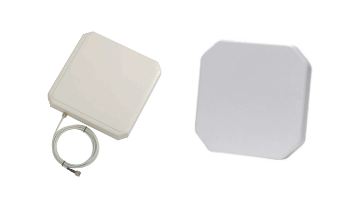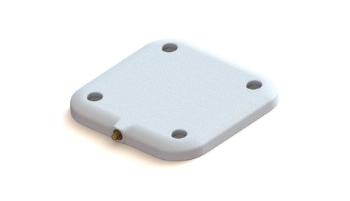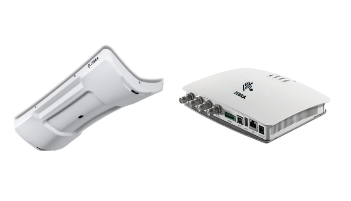RFID Antennas Attach to RFID Readers and Portals
Use RFID Antennas to attach to RFID readers and portals and simplify the tracking of RFID tagged and labeled assets and inventory.
RFID Antennas

What are RFID Antennas?
RFID antennas are an extensive of RFID readers. They are responsible for transmitting and receiving radio frequency signals that interact with RFID tags. In the case of RFID handheld and some all in one devices, the RFID antenna(s) are encased in the same structure. However, for most fixed readers, RFID antennas are attached using a coaxial RF cable.

Circular vs Linear Antennas
When choosing the right RFID antenna for your application, you may want to take into consideration the polarization of your antenna. This can have an effect on the performance of your RFID read zone. A circular polarized RFID antenna emits electromagnetic waves in a spiral motion. Antennas can have a right hand circular polarization or a left hand circular polarization. Right or left determines the direction of the spiral.
Whereas linear polarized antennas must be aligned directly to the RFID tag to perform at optimum levels, circular polarized antennas have a constantly rotating field that provides a wider bandwidth for picking up tags. This wider bandwidth, however, also means that the read range will be a bit shorter than that of a linear polarized RFID antenna. Circular polarized RFID antennas are ideal for situations where a wide variety of RFID tags on different surfaces need to be read in a smaller amount of space.

What Antenna Is Best for My Use Case?
There are many factors when selecting an RFID antenna that you should consider including the gain, antenna size, antenna beam width pattern and polarization. When selecting an application for a use case, it’s important to outline read zone you are targeting and work your way backwards from there.
What You Should Know Regarding RFID Antennas
The most expensive antenna isn’t the best one for your project. It’s important to understand the read zone you are targeting and then apply the appropriate antenna for the job. This may require onsite testing to determine.